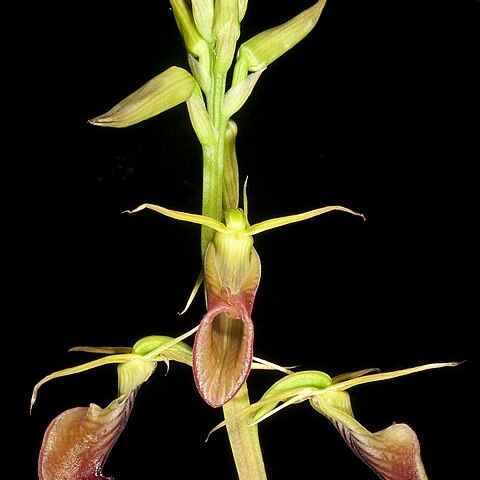Evergreen, clumping terrestrial orchids, mostly leaf-bearing (one species is a leafless mycoheterotroph), with thick fleshy roots that spread horizontally in upper layers of soil (no tubers). Leaves distinctive, leathery, undersurface often heavily pigmented with red or purple colours, held erect on prominent above-ground petiole. Raceme tall, stiff, few-to multi-flowered; peduncle wiry or sturdy, with several sterile bracts. Flowers non-resupinate, dull-coloured, dominated by large labellum. Tepals free, of similar shape and size, inconspicuous, narrow, mostly reflexed out of the way. Labellum attached by its base to column base. Labellum lamina large, porrect to erect, embracing column at base, glandular hairy, margins incurved or recurved, variously patterned. Callus with longitudinal ridges and shiny round to elongate calli. Column short, squat, almost hidden in labellum base. Pollinia 4, clavate, yellow, attached directly to terminal viscidium.

